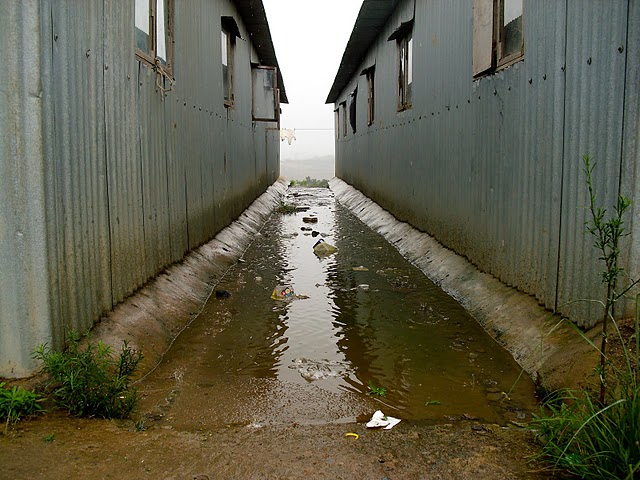Pictures by Lenny Cohen
eMatinini – Place of Tin
The Provision of Public Housing in South Africa: The Impact and Effect of Transit Camps on Residents and its Place in the Provision of Housing
Click here to download this paper in pdf. Contact Lenny Cohen on +1 215 805 6908 or siphossibiya [at] gmail.com
Abstract
Development in South Africa encompasses many things, and housing is one of these aspects. Post-apartheid South Africa has set out to provide housing to all, it is even a constitutional right. However there have been many problems with housing development and delivery. Transit camps, which are meant to house informal shack-dwellers temporarily, are an example of housing innovation and development. Yet they simultaneously reflect the many problems within the process, and also represent the challenges South Africa is confronting as a whole, for comprehensive development and the progress of a new, more united nation.
To study transit camps and housing development, I looked into one transit camp specifically, in the municipality of eThekwini/Durban, nicknamed Ematinini, or ‘place of tin’. I spent a great deal of time at Ematinini, walking around the area and speaking with as many residents as I could. I conducted interviews (both formal and informal) with residents and municipal officials to collect information, which I added to my observations of the transit camp itself.
What I have found is that the transit camp of Ematinini is a place no one wants to live in because of the derelict conditions. The residents would rather be living in an informal shack than in this tin camp. Their stays have not turned out to be temporary, and they live with continual uncertainty as to when and where they will be moved, if at all. There is resentment amongst the residents toward

